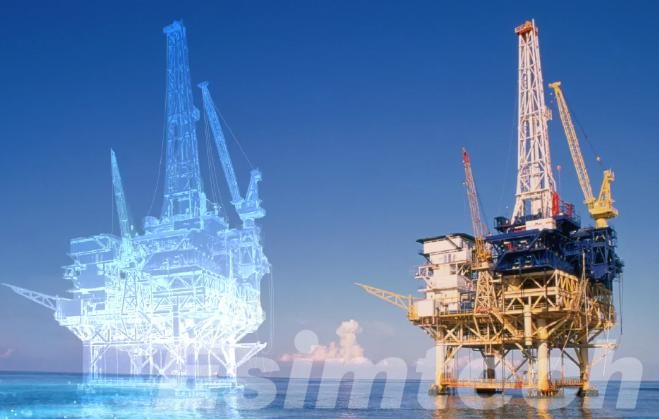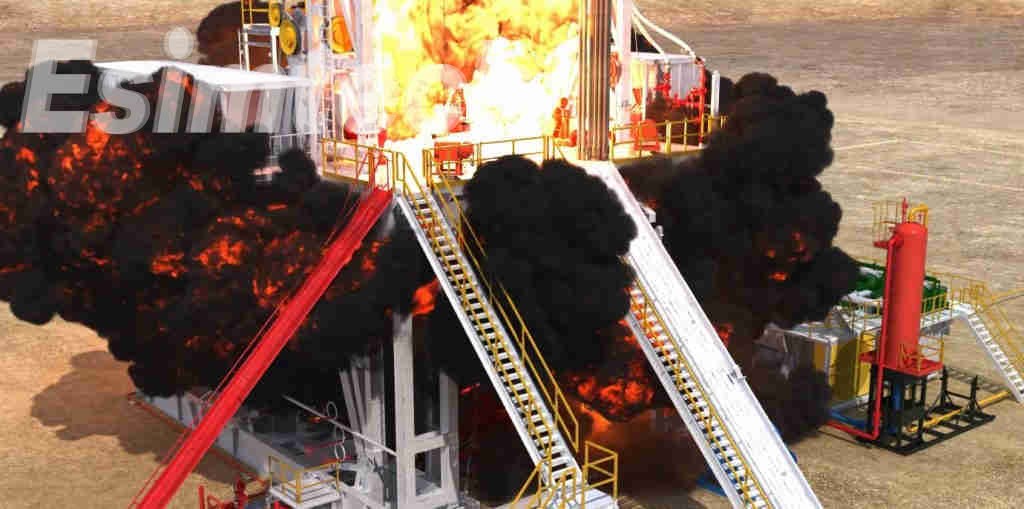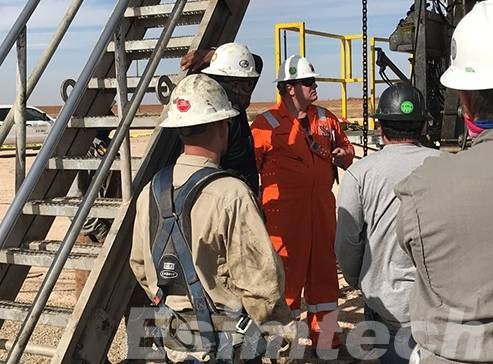A Comprehensive Guide to Digital Twins in the Oil and Gas Industry
In industries heavily reliant on assets and operations, like Oil & Gas, ensuring efficient monitoring, maintenance, and management of equipment and processes is crucial. In this regard, Digital twins in the oil and gas industry are fundamentally transforming the operational landscape of O&G companies. Studies conducted by the Society of Petroleum Engineers (SPE) have indicated that dedicating time to prevent complications and accidents accounts for approximately 20–25% of total well construction time.

The Basics of Digital Twins in the Oil and Gas Industry
What exactly is a digital twin?
A digital twin serves as a virtual replica of physical assets deployed in the field, ranging from pumps and compressors to turbines and pipelines.
For the concept of digital twins to be effective, it is imperative to have access to up-to-date, real-time operational data pertaining to these assets. While advancements in cloud computing, advanced analytics, and AI have revolutionized the industry, the efficacy of a digital twin hinges on its integration with a centralized data repository containing comprehensive asset-related information.
The creation of a digital twin follows an algorithmic process. Initially, a 3D model is generated and then enriched with essential details, including layout, geometry, schematics, and engineering specifications collected from diverse sources. This consolidated dataset is shared across different departments, encompassing engineering, procurement, and operations.
As the digital asset automatically updates with the latest operational and maintenance data, operators can effortlessly retrieve pertinent information regarding asset health and performance through data tags. By addressing failures or production interruptions proactively, preventative maintenance measures are prioritized over reactive ones, thereby extending asset lifespan and reducing maintenance expenses in the long run.

Benefits of Digital Twins in the Oil and Gas Industry
Cost Savings
The integration of digital twins yields substantial cost-saving advantages. For instance, their implementation in offshore oil and gas endeavors in the North Sea has resulted in savings exceeding 2 million euros for projects featuring topsides of 10,000 tons. According to a study by GEP, digital twins and intelligent data systems have the potential to reduce total decommissioning project costs for oil and gas operators by 9% to 15%. Furthermore, if Gartner’s projections hold true, nearly half of major industrial applications will have adopted digital twins by 2021, enhancing operational efficiency by 10%.
Operational Effectiveness
A digital twin serves as an intricate replica of physical assets, encompassing detailed plans of entire infrastructures, including pipelines, gathering systems, heat exchangers, turbines, pumps, and compressors. This comprehensive representation empowers companies to model processes, exert control, and facilitate equipment health monitoring. Digital twins elevate production performance by preemptively identifying equipment issues, uncovering avenues for process enhancement, and minimizing unplanned downtime. Through leveraging digital twins, oil and gas companies are swiftly realizing significant gains. Even a modest 0.1% increase in production, attributable to enhanced process and operational efficiency, translates into millions of dollars in additional revenue for these companies.
Workplace Safety
Utilizing smart wearables such as smartwatches, wearable holographic computers, smart heads-up displays (HUDs), Bluetooth low-energy (BLE) tags, and smart workwear (including biometric vests, hard hats, and boots), oil and gas companies are effectively enhancing workplace safety. These devices, complemented by digital twins, facilitate real-time awareness of operator location within specific contexts, monitor exposure to hazardous environments, mitigate operator fatigue as a root cause of incidents, and deliver critical information to the plant floor in real-time when most needed.

Application of Digital Twins in the Oil and Gas Industry
1. Oil Field Monitoring and Predictive Maintenance
Digital twins play a pivotal role in predictive asset maintenance by proactively identifying potential issues, thereby mitigating unplanned downtimes and optimizing maintenance costs. Leveraging predictive analytics, digital twins continuously monitor the performance of on-field equipment, generating unique asset signatures that encapsulate crucial information such as ambient conditions, operational parameters, and historical loading data. Real-time data is then compared against these models to detect any deviations in patterns, triggering early-warning notifications to preempt major breakdowns and ensure operational reliability.
2. Conducting Dynamic Simulations to Arrive at Optimal Production Workflows
Dynamic simulations facilitated by digital twins revolutionize production workflows by allowing for meticulous pre-deployment planning and analysis. By running simulations before physical deployment, workflow designers gain a comprehensive understanding of potential bottlenecks and inefficiencies, enabling them to optimize processes for enhanced productivity. Integrated with data simulations and analytics, digital twins offer actionable insights into current workflows, aiding in proactive problem-solving and offering viable alternatives to address production challenges as they arise.
3. Modeling Real-Life Drilling Scenarios to Determine Equipment Feasibility
Digital twins offer a sophisticated platform to model real-life drilling scenarios, providing invaluable insights into equipment feasibility. By preemptively identifying potential issues and challenges, operators can optimize equipment efficiency and reduce overall well construction costs. Additionally, digital twins enhance geothermal drilling activities by streamlining operations and expediting well construction timelines, thereby optimizing scheduled rig moves and other well services.

4. Optimization of production through digital twins
Digital twins help optimize oil and gas production by providing data insights across five different stages, namely:
- Organization and execution of the computerized maintenance management system (CMMS)
- Improvement in asset reliability
- Manage information configuration
- Optimize operational insights
- Lifelong asset maintenance and management (evergreen digital twins)
5. Data integration for intelligent asset management
Intelligent asset management involves getting data from multiple data sources, including SCADA, remote sensing, subsurface surveillance data, etc., thus involving the integration between internal and external systems and back-office operations.
Physical asset management through digital twins, therefore, not only requires real-time maintenance but measuring asset performance under various “what-if” scenarios. Moreover, it minimizes the cost associated with traveling to and from the field to
Rockwell partnered with Microsoft’s IoT services to proactively manage its oil and gas assets. Rockwell uses the IoT platform to monitor the variable speed motors of its pumps from its command center in Ohio. The company can then proactively identify issues in real-time, saving up to $300,000 of production per day a malfunctioning pump could otherwise cost.
6. Increased workplace safety
Smart wearable IoT devices such as smart watches, biometric vests, and Bluetooth tags help monitor workforce activities, track operator location, create awareness of workforce fatigue, and get access to critical information on the plant floor.
7. Maintaining tacit enterprise knowledge using digital twins
The average age of employees in the O&G industry is 56 years, and they will be eligible for retirement in the next decade, thus threatening the industry with a critical skills shortage.
By maintaining a centralized repository of asset information, the concept of digital twins helps achieve operational efficiency and reduce the cost of operations by eliminating the need for hiring costly personnel.
Conclusion
In summary, the implementation of digital twins in the oil and gas industry offers significant advantages, including improved efficiency, safety, and cost reduction. As technology evolves, the potential for digital twins to revolutionize operations will continue to grow. To fully leverage this innovation, companies must invest in robust infrastructure and skilled personnel. Embracing digital twins is essential for staying competitive and resilient in the dynamic oil and gas market.
